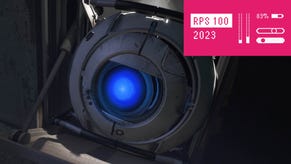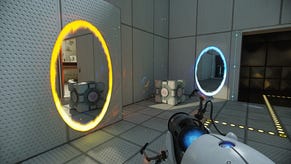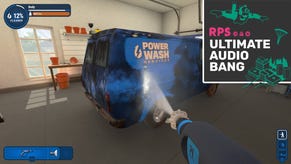Cardboard Children: Portal
Get cake.
Hello youse.
A few years back, there was an obscure little indie game on PC called “Portal”. It was about using portals to solve environmental puzzles, and those of us in the know had an absolute blast with it. It was followed by a sequel, called “Portal 2”, which was also great fun – but too long and with annoying voices. Now, not many people have played these games, but that hasn't stopped Cryptozoic releasing a board game based on this little-known property. Let's take a look at Portal: The Board Game.
PORTAL: THE UNCOOPERATIVE CAKE ACQUISITION GAME
So, you're making a board game based on Portal. What do you do? Maybe you make a board that's some kind of floor plan, and the players have to navigate it, using portals to move from position to position. Some kind of miniatures game, maybe? A race game – where the players have to find the quickest, shortest routes from one place to another? That could work, yes...
Or, perhaps you throw all of that away and design a board game that captures the feel of Portal. You make it feel like a puzzle. You make it cold, tough, ruthless. You make it quirky, fun. You introduce a little bit of chaos.
Yes, you do that that one. And you get this – a fantastic little board game that absolutely nails the mood and demands repeated play.
Let me explain, if I can, how this thing works.
HOW IT WORKS
There are three rows of five tiles, and each tile represents a chamber in a laboratory. At the far right end of this map, things are going to happen. Chambers are going to activate and then be destroyed. At the near end of the map, new chambers are going to come into being. The laboratory is forever moving, and forever changing.
Players have test subjects in the lab area, and they're spread across the starting chambers. In a turn, players can choose a chamber and move test subjects from there into an adjacent chamber. If they only move one test subject, they can take an Aperture Science card from the deck. These cards can be played to do special things within the lab.
Now, the whole point of the game is to get cake. I know. Bear with me.
The game ends when any one player has lost all of their test subjects. At that point, each player totals the amount of cake that they have inside the lab's rooms, and the one with the most cake wins. How do you get cake? By activating chambers, of course.
Every turn, after a player makes a move, they must activate a test chamber at the far end of the lab. The player who has the most test subjects in that room gets the rewards printed on the tile. Maybe another test subject. Maybe another card. Maybe – hopefully – some cake. These rewards are distributed at the near end of the lab, where the newest rooms appear, and then the activated room is destroyed – taking with it all the test subjects and any old cake that might be lying in there.
Okay, it sounds confusing. I know.
Basically, here's the deal. You want to move your little guys into the dangerous chambers to claim majority control and all the rewards. Then, when those rewards get sent into the lab – you want to protect them. Your test subjects can carry cake, so you will probably want to keep moving your acquired cake away from those dangerous rooms. But players can carry anybody's cake, so maybe you'd rather run another player's cake towards incineration.
The game is absolutely brutal. It's incredibly vicious. It can also end in about 20 minutes.
Those cards you can collect – these do lots of cool things. They can award you cake. They can incinerate test subjects. They can activate conveyor belts that move all your test subjects further in or away. They can generate Companion Cubes to distract your opponents. They can also be used to fire your portal gun.
Ah, yes. Portals.
There are only two portals in the game. Every time a player fires their portal gun they can change the placement of the portals. As these portals are treated as adjacent spaces, they become crucial to movement – they can make all the difference when you're trying to protect your cake or reach a chamber before the majority gets counted.
But here's another interesting wrinkle to the cards. Every time one is used, it gets placed face down on the discard pile – and on the back of each card is a character. These characters change fundamental rules of the game while they are visible. If Chell appears in the game, players can open a portal for free at the start of every turn. If Wheatley appears in the game, it's minority control that steals a chamber's rewards.
I think it's just great.
SUMMING UP
Oh, I really really enjoyed playing this game. It is smart, nasty, funny and fast. You move your little guys about, hitting chambers to pop out those rewards, then you kill them. You position your other test subjects to guard your cake. You send others to steal cake. You're on your toes constantly, looking for rule changes and trying to take advantage of the map's constantly shifting state. All your little guys become slaves to your assault on this puzzle. Life is cheap. You become a monster.
I love that the game takes the approach of making you feel like one of the cold bastards running this experiment. And I love the fact that, apart from anything else, this is a solid area control game with a real puzzle feel and a nasty streak a mile wide.
The artwork is beautiful, the components are great – with the exception of the map tiles. They're too thin, too fiddly. But man – seeing the whole laboratory move and change, that's just wonderful.
I strongly recommend you pick this one up. It's not just a great use of a great IP – it also feels fresh and clever.
This was a triumph.










